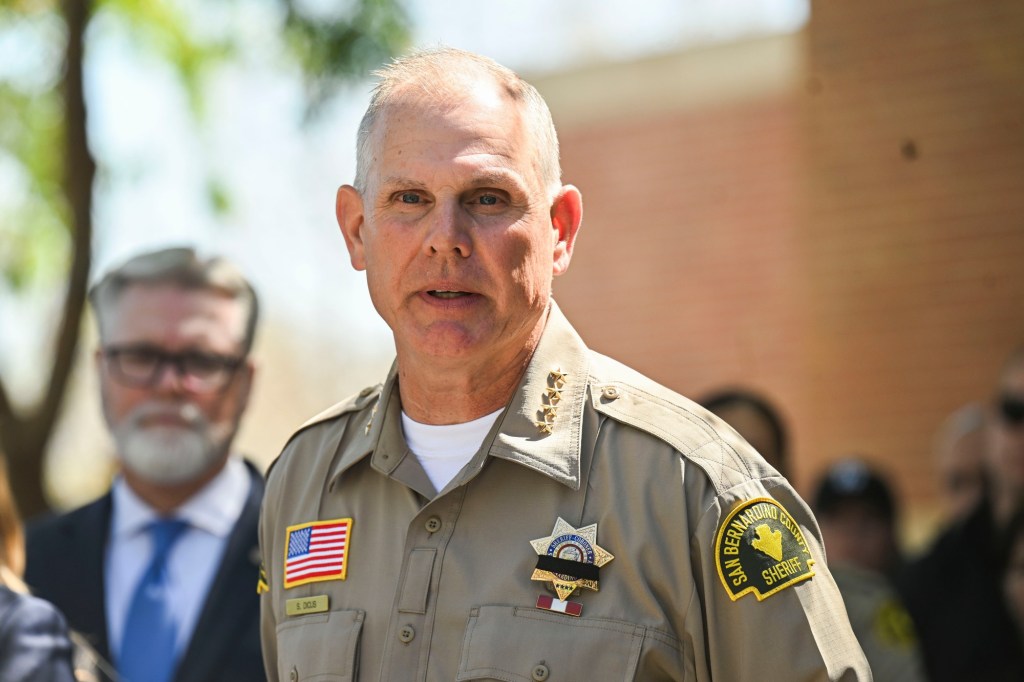
In law enforcement, we face a broad spectrum of responsibilities every day – from investigating violent crime to helping victims, managing public events, and ensuring safety on our roads. Among these duties is a growing, heartbreaking challenge: responding to individuals experiencing mental health crises, including those who find themselves in danger on or near our freeway overpasses.
In the past eight months, deputies have responded to 24 calls for service at seven different freeway overpasses throughout the city of Rancho Cucamonga. During that time, there have been at least ten separate incidents involving individuals either falling or attempting to fall from freeway overpasses in Rancho Cucamonga. Tragically, four lives were lost including one in the past week involving a 14-year-old who recently graduated the 8th grade. In six other cases, deputies intervened just in time – preventing additional loss of life.
Since 2018, the San Bernardino County Sheriff’s Department has responded to more than 42,747 calls for service involving individuals in mental health crisis. In Rancho Cucamonga, deputies have answered 6,095 calls for service. These aren’t just call logs – they represent neighbors, coworkers, students, and family members whose pain has rippled across our communities.
Two of the lives lost last year were high school students, just weeks apart, at the same overpass. Their deaths stunned not only their schools and families, but also our deputies – many of whom live in these communities, raise children of the same age, and carry the weight of these tragedies long after the scene clears.
Mental illness is often closely linked with substance abuse disorder. In too many cases, our deputies and crisis teams encounter residents who aren’t just experiencing a mental health episode, but who also suffer from addiction, withdrawal, or trauma exacerbated by untreated substance use. That’s why, in addition to supporting prevention efforts like Senate Bill 800, I’ve been advocating to our county Board of Supervisors and city partners for greater local capacity to treat addiction and co-occurring mental illness.
We’re optimistic that Proposition 1 dollars – recently approved by voters – will continue to bring investment to our region. But we also know that many of those projects will take years to plan, fund, and build. We can’t wait that long. We need solutions that address what’s happening today – not just future treatment campuses or big-box programs that are years from breaking ground.
Eight months ago, the Rancho Cucamonga formally requested that Caltrans install suicide prevention barriers and signage on specific overpasses that have experienced repeated incidents. While initial conversations occurred, the pace of action has not matched the urgency of the problem. These safety upgrades fall squarely under Caltrans’ jurisdiction. We believe the state can do more to move these efforts forward.
That’s why Senate Bill 800, authored by Senator Eloise Gómez Reyes and supported by Rancho Cucamonga, is a smart and timely response. This legislation would direct Caltrans to pilot suicide deterrent infrastructure – such as signage and physical barriers – on 5 high-risk freeway overpasses in San Bernardino County. It’s targeted, achievable, and data driven.
As your Sheriff’s Department, we’re doing our part. Our Community Outreach and Support Team (COAST), HOPE Team, and mobile crisis partners respond daily to residents in distress. These teams bridge the gap between law enforcement and mental health services – often helping people find the care they need before a situation turns tragic. But those efforts are not a substitute for environmental design improvements that can delay or prevent fatal decisions.
Voters are also seeing the connection. In November, Californians overwhelmingly supported Proposition 36 – affirming a public mandate for smarter, more compassionate approaches to behavioral health and drug-related crime. SB 800 reflects that same thinking: evidence-based prevention, rooted in public safety.
This issue isn’t unique to Rancho Cucamonga. Law enforcement has responded to similar calls in Apple Valley, Redlands, Colton, and Ontario. In Victorville, a 2022 suicide attempt on Interstate 15 caused a major collision and public safety disruption. These cases remind us that this is not just a behavioral health issue – it’s also a public safety issue.
We understand Caltrans manages a vast transportation network with many demands. But this is a targeted, achievable fix – one that can help save lives. We’re not asking for miracles. We’re asking for timely, evidence-based safeguards that have worked elsewhere.
Our job as law enforcement is to respond – but also to prevent where we can. As the sheriff of our county – I do not take that responsibility lightly. SB 800 represents a chance to do both.
Shannon Dicus is sheriff of San Bernardino County.



